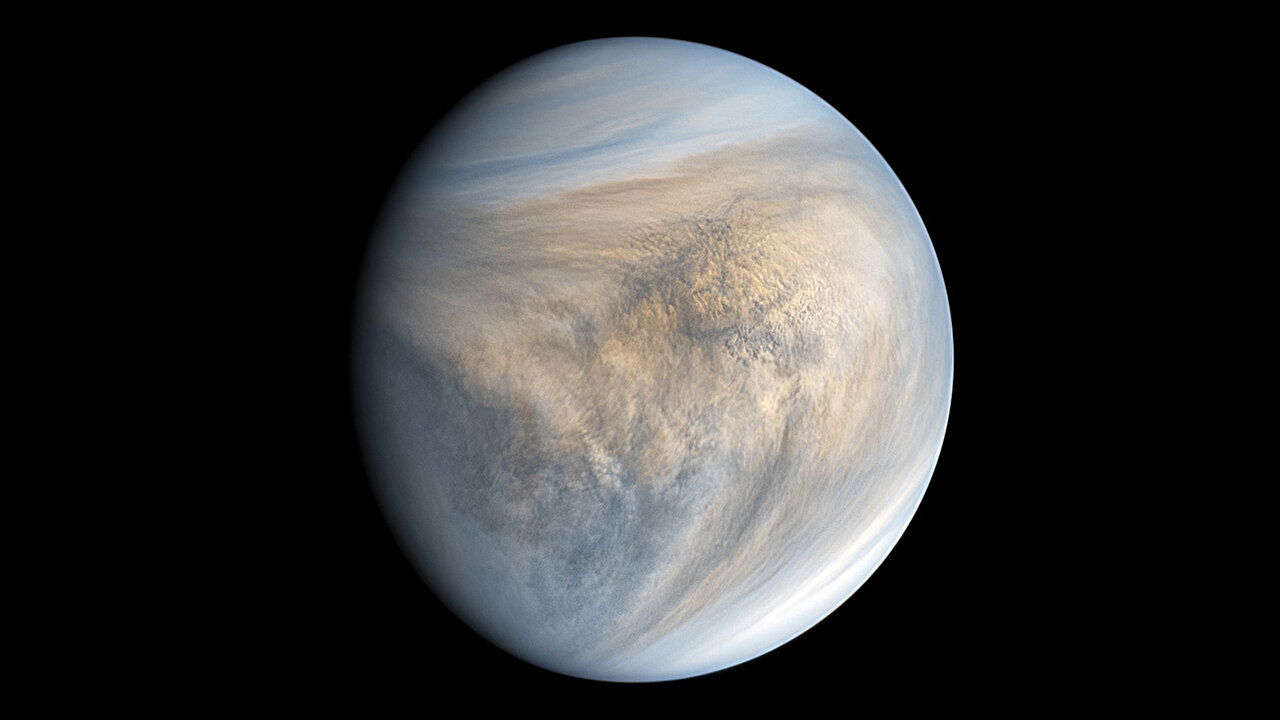Imagine storms fiercer than the strongest hurricanes on Earth, blowing nonstop all the way around an entire planet. This is exactly what happens on Venus, where winds at the cloud tops race around the planet at speeds of more than 100 metres per second. Even more astonishing is that Venus itself rotates very slowly so slowly that one full day on Venus lasts about 243 Earth days. Yet its atmosphere completes a full trip around the planet in just four Earth days. This extreme mismatch is called “superrotation,” and for years scientists have struggled to fully explain it. Now, new research has revealed an important clue: a daily rhythm in Venus’s atmosphere, driven by the heat of the Sun, may be a major force behind these extraordinary winds. The study, led by Lai and colleagues and published in AGU Advances, provides fresh insight into the hidden mechanics of Venus’s atmosphere. Unlike Earth, where the atmosphere generally moves at roughly the same speed as the planet’s surface, Venus’s atmosphere behaves more like a separate, fast-moving system. Researchers suspected that different types of atmospheric waves and circulation patterns were helping drive the superrotation, but it was unclear which ones were most important. To investigate, the research team examined data collected over 16 years by two spacecraft: the European Space Agency’s Venus Express and Japan’s Akatsuki satellite. These spacecraft studied Venus’s atmosphere by measuring how radio waves bent as they passed through its thick clouds, revealing details about temperature, pressure, and motion. In addition, the scientists used a computer model to simulate how Venus’s atmosphere behaves under these extreme conditions. The team focused on something called “thermal tides.” These are large-scale movements of air caused by uneven solar heating. When sunlight warms the dayside of Venus, the heated air rises and sets off waves that travel around the planet. There are two main types of thermal tides on Venus. Diurnal tides follow a once-per-day cycle, while semidiurnal tides repeat twice per day. Past studies suggested the semidiurnal, or twice-daily, tides were mainly responsible for helping push the atmosphere into superrotation. However, this new research paints a different picture. By including data from the planet’s southern hemisphere for the first time, the scientists found that the diurnal, or once-per-day, tides play a much bigger role than previously believed. These diurnal tides help move energy and momentum upward, toward the tops of Venus’s thick cloud layers. This transfer of momentum acts like a global engine, constantly pushing the atmosphere forward and keeping the winds racing around the planet at extreme speeds. Although more research is still needed to fully understand every detail, this discovery significantly changes scientists’ understanding of Venus. It also offers valuable lessons for studying other planets that rotate slowly or orbit close to their stars. Understanding Venus’s atmosphere could even help astronomers interpret weather patterns on distant, Earth-like worlds in other solar systems. Venus may be our closest planetary neighbor, but with its scorching temperatures and furious winds, it remains one of the most mysterious worlds we know. This new finding brings us one important step closer to understanding its alien climate.
https://knowridge.com/2025/11/scientists-discover-what-really-powers-venuss-wild-planet-encircling-winds/
